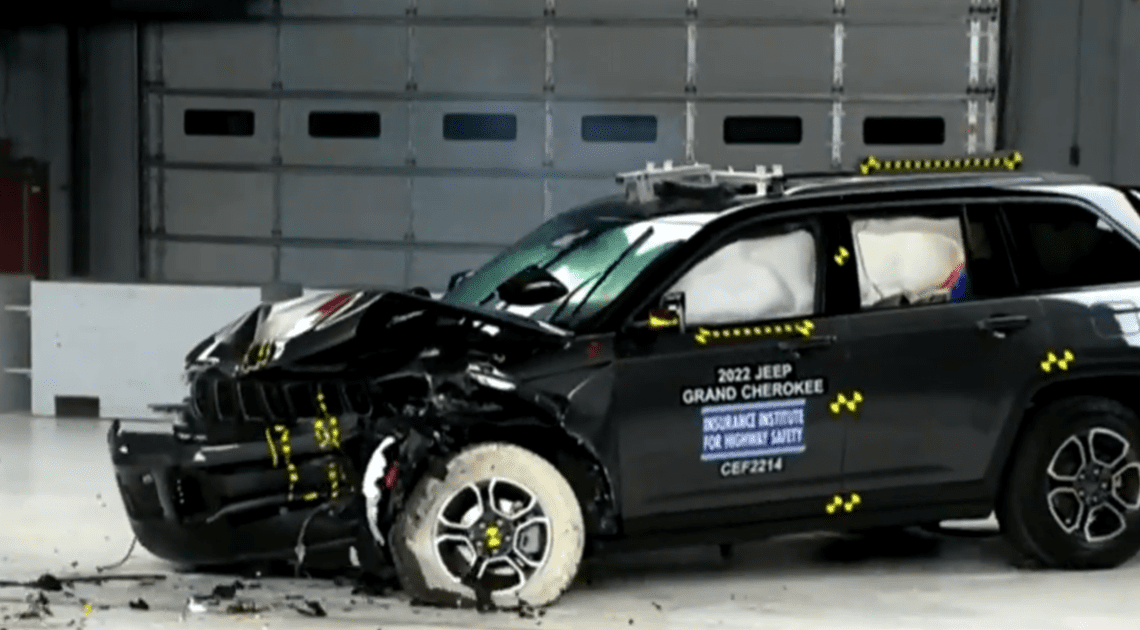A new crash test conducted by the Insurance Institute for Highway Safety (IIHS) has found that several midsize SUV models scored poor ratings in rear-seat safety.
Of the 13 midsize SUV models evaluated, all earned good marks for driver protection, IIHS said Tuesday.
However, six of the 13 scored in the poor category for rear-seat safety, IIHS said.
“The majority of the midsize SUVs that we evaluated have a lot of work to do to improve safety for the rear seat position,” Raul Arbelaez, vice president of the IIHS Vehicle Research Center, told CBS News.
Those six were the Honda Pilot, Hyundai Palisade, Jeep Grand Cherokee, Jeep Wrangler 4-door, Mazda CX-9 and Nissan Murano.
“We just saw injuries, injury measures on the dummy, that were too high on the chest,” Arbelaez said. “High levels of head and neck forces.”
Arbelaez explained that the vehicle models have not become less safe over the years, but that testing has become more rigorous.
“I wouldn’t say that any of these vehicles became less safe,” Arbelaez said. “We continue to move the goalposts and create more challenging tests that we feel give consumers information about which vehicles are the safest.”
The test simulated a 40 mph front-end crash. For the new test, IIHS added a test dummy — about the size of a 12-year-old — to the backseat. The IIHS found that the risk of a fatal injury in the backseat is 46% higher compared to the front, where improved restraint technology is more commonly found.
Four of the 13 SUVs received good ratings for backseat safety: the Ford Explorer, Ford Mustang Mach-E, Subaru Ascent and the Tesla Model Y. Three others received marginal ratings: the Chevrolet Traverse, Toyota Highlander and Volkswagen Atlas.
The Alliance for Automotive Innovation, a trade association that represents several vehicle manufacturers, provided CBS News with the following statement Tuesday in response to the IIHS report:
“Safety is the auto industry’s top priority. Vehicles continue to get safer as automakers across the board test, develop and integrate promising new technologies to help prevent crashes and protect occupants in the event of a crash. While innovations continue to make the driving experience safer, seatbelts and seatbelt reminder systems are a critical safety component to today’s vehicles, and we encourage all occupants to ensure they are belted on every trip.”
Click Here to Read the Full Original Article at Home – CBSNews.com…

